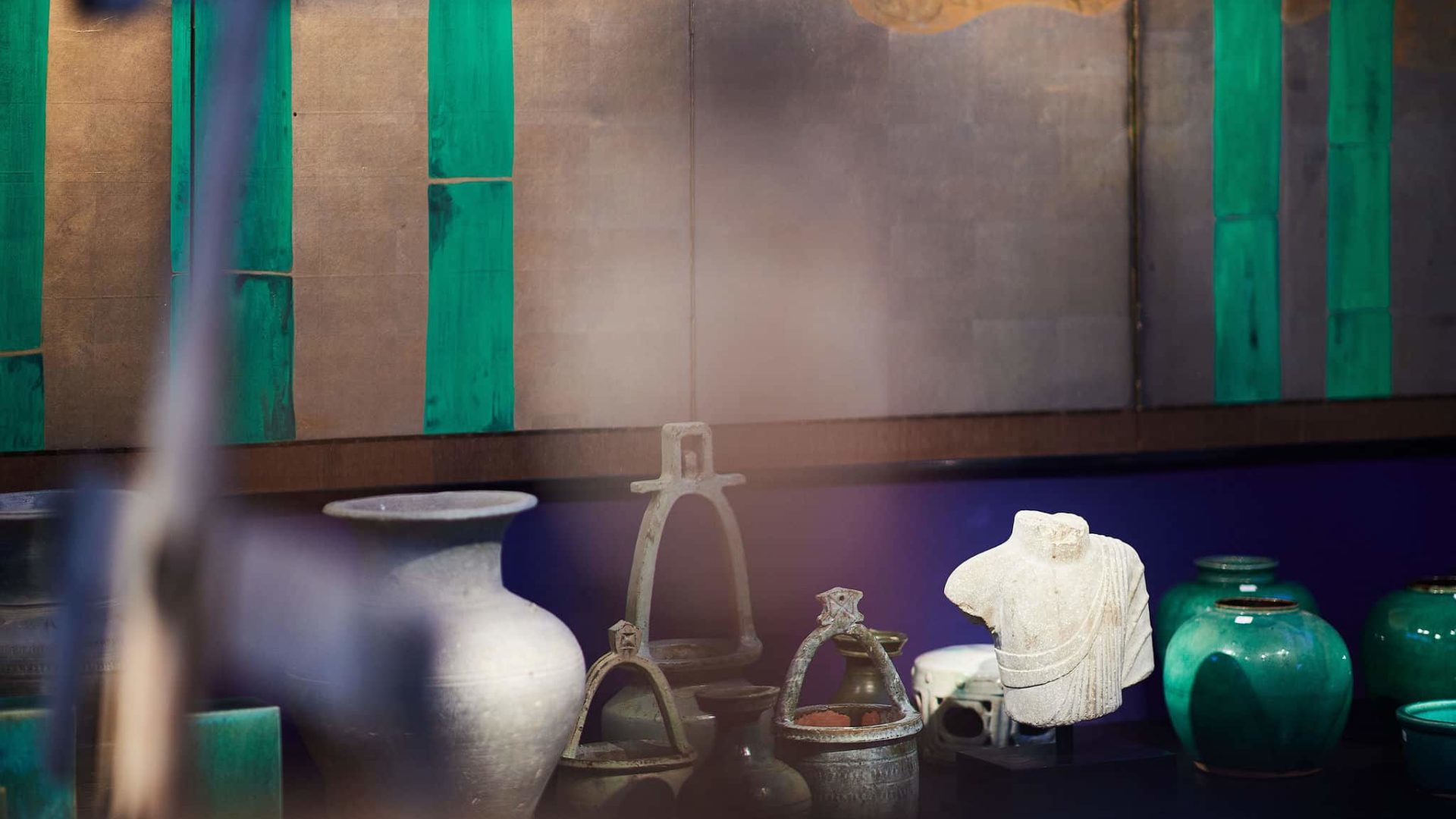

Kunsthandel Egbert Eibel
Stand H15
Exceptional Sofa
from Düsseldorf Castle, around 1820
Mahogany
free-standing sidebackrests in the appearance of a gondola,
two fully sculpted eagle heads as a reminiscence of
the Napoleonic coat of arms,
closure of the backrest in the form of a tensioned bow,
newly upholstered and upholstered,
Shellac hand polished
Height: 74 cm-Width: 218 cm-Depth: 59 cm
This piece of furniture is a sofa of significant historical value.
This sofa from Düsseldorf Castle is one of five sofas that were made around 1818 by order of Emperor Napoleon in Paris and sent to Germany as gifts.Louis Maximilien Rigal, minister under Napoleon, commissioned a famous furniture manufacturer in Paris to build the sofas, one of which was sent to Düsseldorf Castle, from whose inventory this sofa originates.Düsseldorf Castle burned down completely in March 1872, this sofa was saved from the flames.On the back of the sofa is the inventory stamp of Düsseldorf Castle.The art dealer Egbert Eibel was able to purchase this sofa on the Dutch market.The extraordinary construction resembles a gondola. Two Napoleonic eagles flank the curved sidebackrests.
The backrest is framed by a tensioned bow, which is probably symbolic of the relationship between the former Westphalian and France.
One of the sofas, slightly smaller, remained in the Rigal family, which is based in Krefeld and Bad Godesberg.This piece of furniture is a sofa of significant historical value.
James Ben Ali Haggin III
1882 New York – 1951 New York
Painting of a seated person
Title “Midnight’s Fool”
Top right Dedication and signature:
“To Jules Batthyany with appreciation
Ben Ali Haggin
Florence – 1925 ”
Height 185 cm-Width 150 cm
Canvas doubled, aluminum tenter
The painting shows a lady sitting in a chair in a typical pose of the 1920s, in a chiffon dress, wrapped in front, her left arm stretched out on a dandy stick / dance stick. The right hand is placed on the crossed legs, holding cigarette in cigarette holder, finger ring with green stone. The knee-length dress leaves your gaze on slender legs and brown pumps on the feet.
On the right shoulder a red flower infected, the wide cleavage adorned with a pearl necklace. Long fine earrings, red lipstick and rouge on the cheeks, cloche hat.
Haggin painted this painting for an artist party on Halloween night. Every artist should bring a scary object created by him to this party. For this reason, Haggin has painted the painting in two layers, with bright light irradiation from the top right one on the painting, transforms the depicted face from a beautiful face into a horror-looking face. The assumption suggests that the person portrayed as a woman is his friend Florence Ziegflied, called Flo.
Haggin and Ziegfiled were very close friends. Ziegfield was probably the most famous theater and film producer, worked closely with Ben Ali Haggin, and both were probably the most dazzling personalities in the theatrical and film scene of the 1925s. Florence Ziegfield has u.a. played a major role in the production of the film Ben Hur.
Until about 30 years ago this painting hung in the castle of Count Jules Batthyany in Hungary. Count Batthyany, a painter’s colleague, had been given this painting by Ben Ali Haggin.
Contact
Egbert Eibel
+49 171 631 2547
https://www.eibel-antik-art.de
kontakt@antiquitaeten-eibel.de
Adresse
Alter Münsterweg 3
48341 Altenberge
Germany